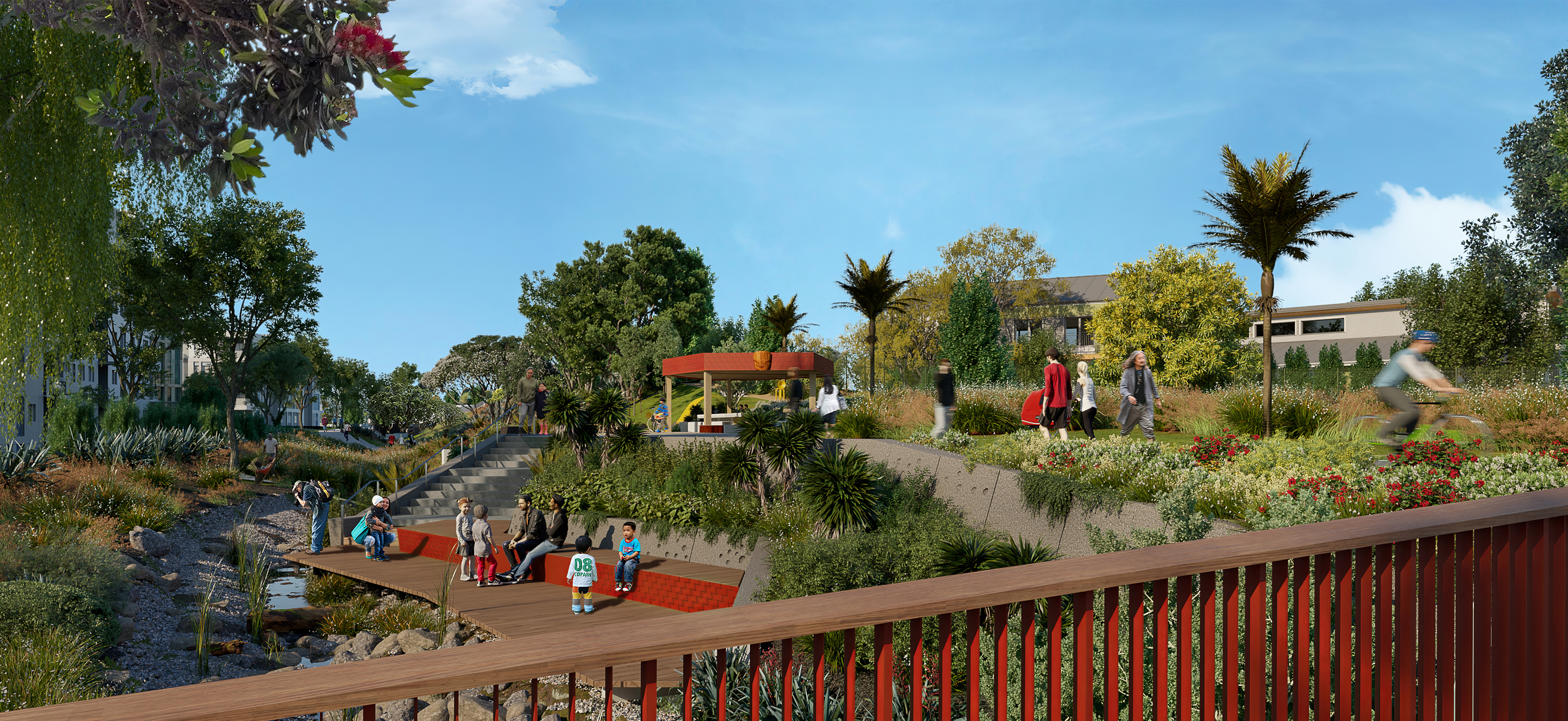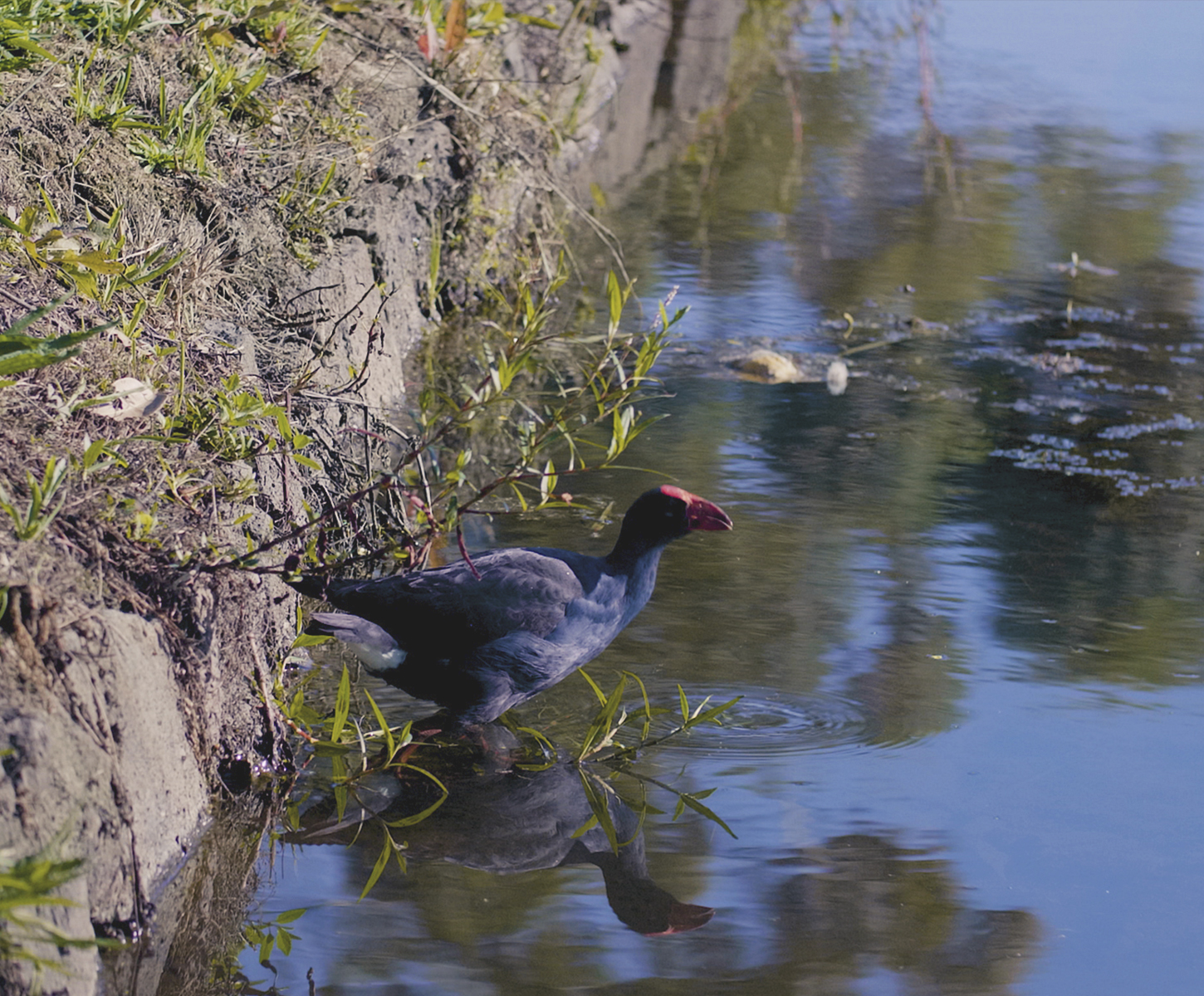Mana whenua contribution to Te Ara Awataha
06 August 2021
- Northcote
- Mana Whenua
Eke Panuku engaged mana whenua-nominated artists to work alongside community stakeholders to design the Te Ara Awataha.
Te Ara Awataha is a green ‘corridor’ designed to make it easy and convenient for people to walk or cycle, play and meet people in the Northcote neighbourhood.


Te Ara Awataha means ‘the path of the Awataha’ and reflects the deep significance of the water source and cultural connection to mana whenua.
'Daylighting' Te Ara Awataha
Te Ara Awataha will link up Northcote’s existing parks and open spaces, and will include a shared cycle and walking path, a planted native corridor, play trails and play destinations. It has an important role in holding, moving and improving the quality of wai māori (freshwater) including the restoration of the historic Awataha Stream.
The scope of this work is to find opportunities for an artist/s to incorporate the story of place and the cultural narrative into the existing design of the proposed greenway.
This regenerative process, known as ‘daylighting’, will boost the mauri (life essence) of the stream, improving water quality and allowing it to become a habitat for birds, insects and tuna (eels) once more. It will also reconnect the community to this lost environmental taonga (treasure).
Mana whenua have gifted a name to Northcote’s greenway. Te Ara Awataha means ‘the path of the Awataha’ and reflects the deep significance of the water source and cultural connection to mana whenua.
The project team have been working closely with mana whenua iwi representatives and artists to ensure that Te Ara Awataha captures the unique cultural narratives and values of this place. The design has developed out of a series of cultural health indicators, with a strong focus on healthy people and healthy environments.
Mana whenua artworks and integrated cultural design elements have been included to ensure that Te Ara Awataha uniquely represents this place, and it’s cultural and natural histories.
Since the restoration commenced, an increasing variety of birds have been observed at the reserve including tuī, kererū, kotare and tauhou as well as familiar introduced species. Recently a neighbour captured video of a kākā – marking the first local sighting of the native in over 30 years.
